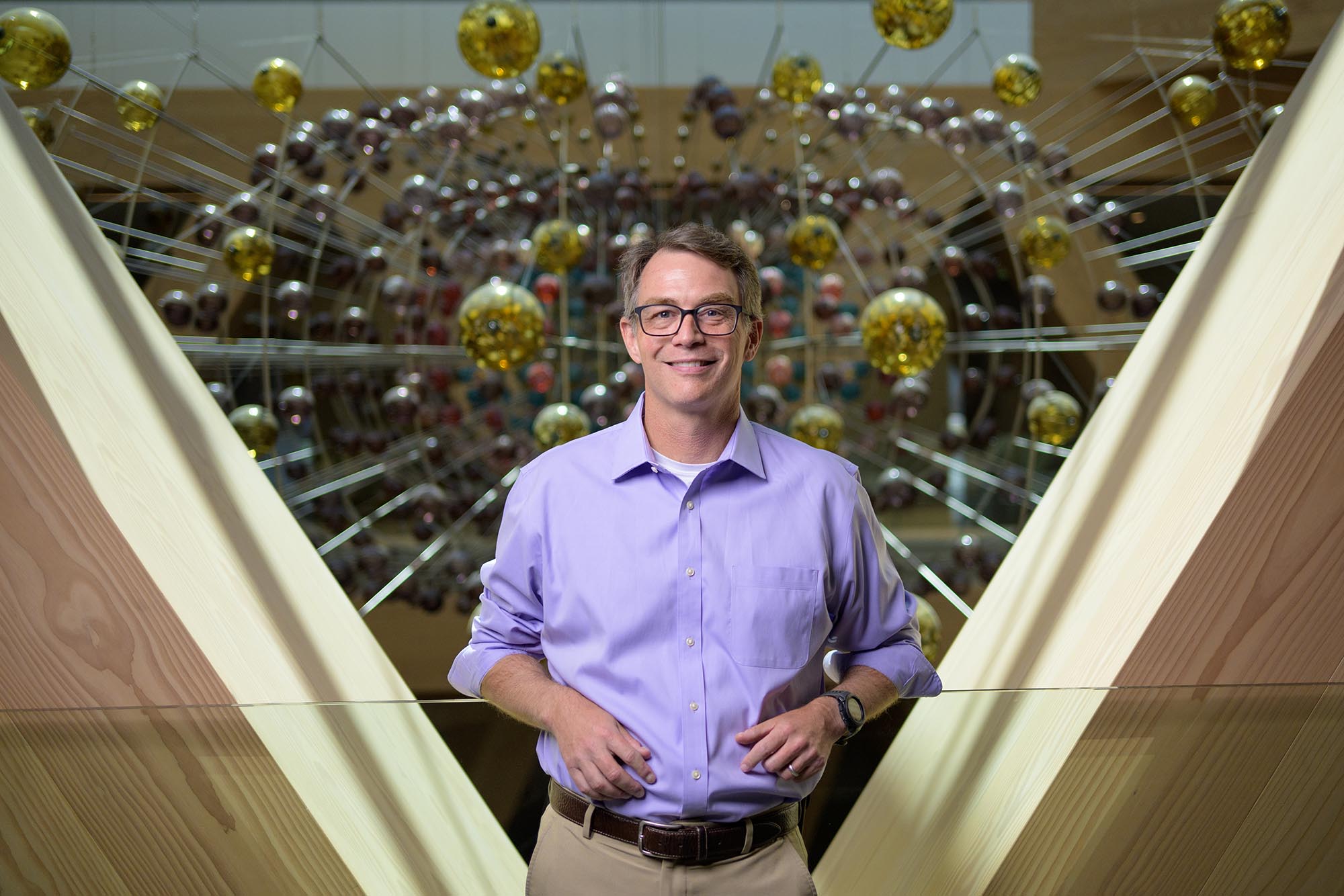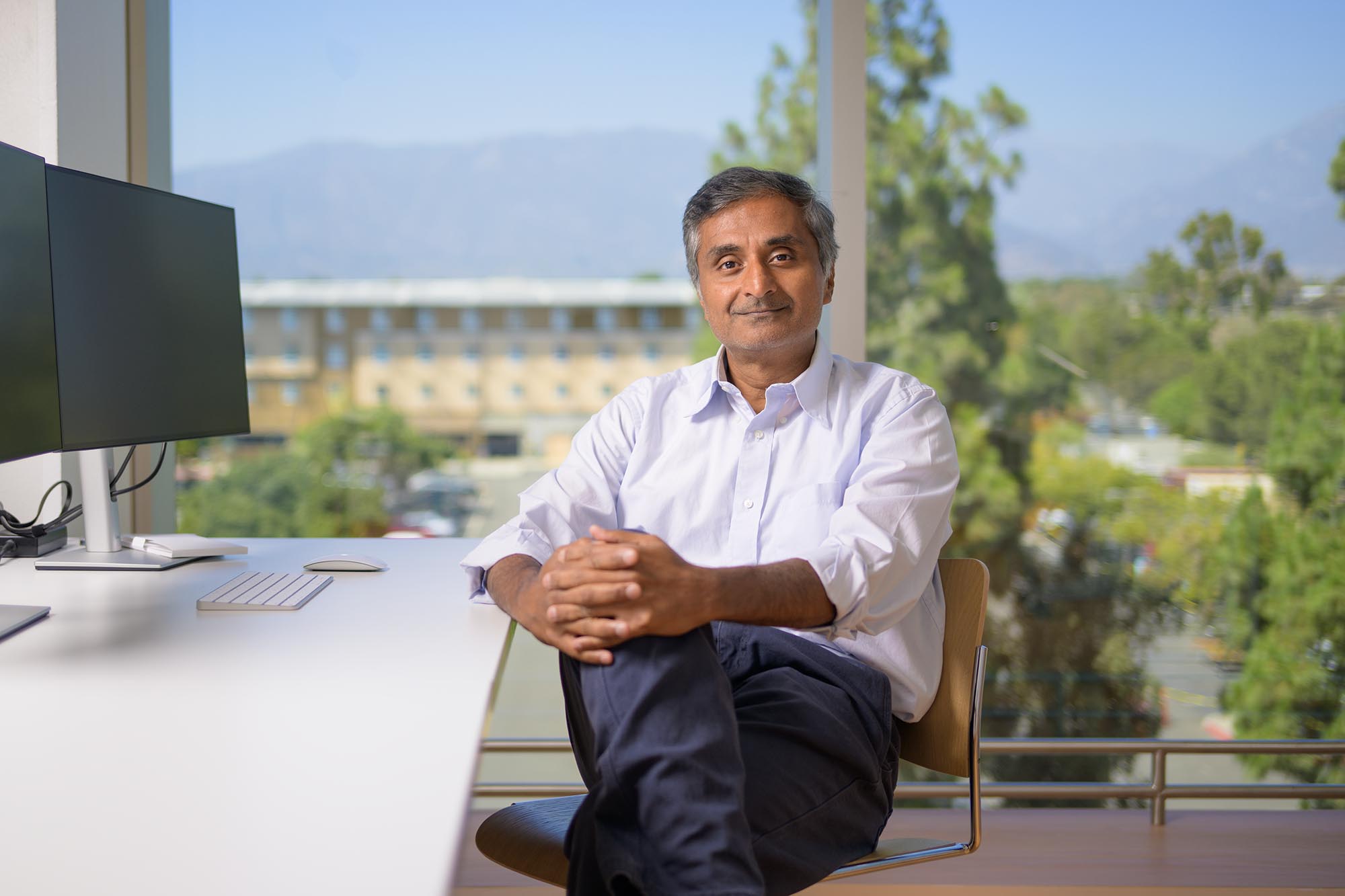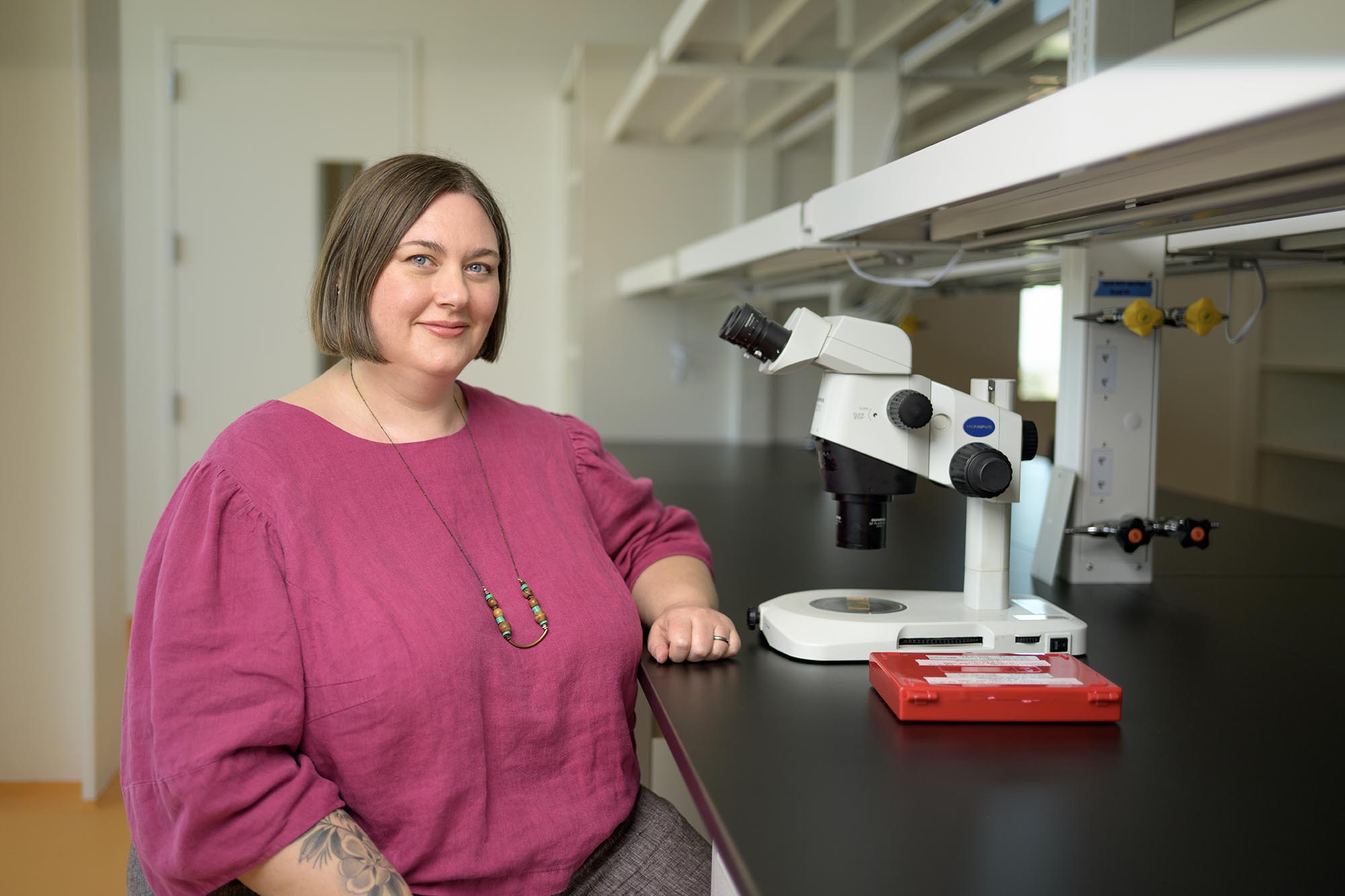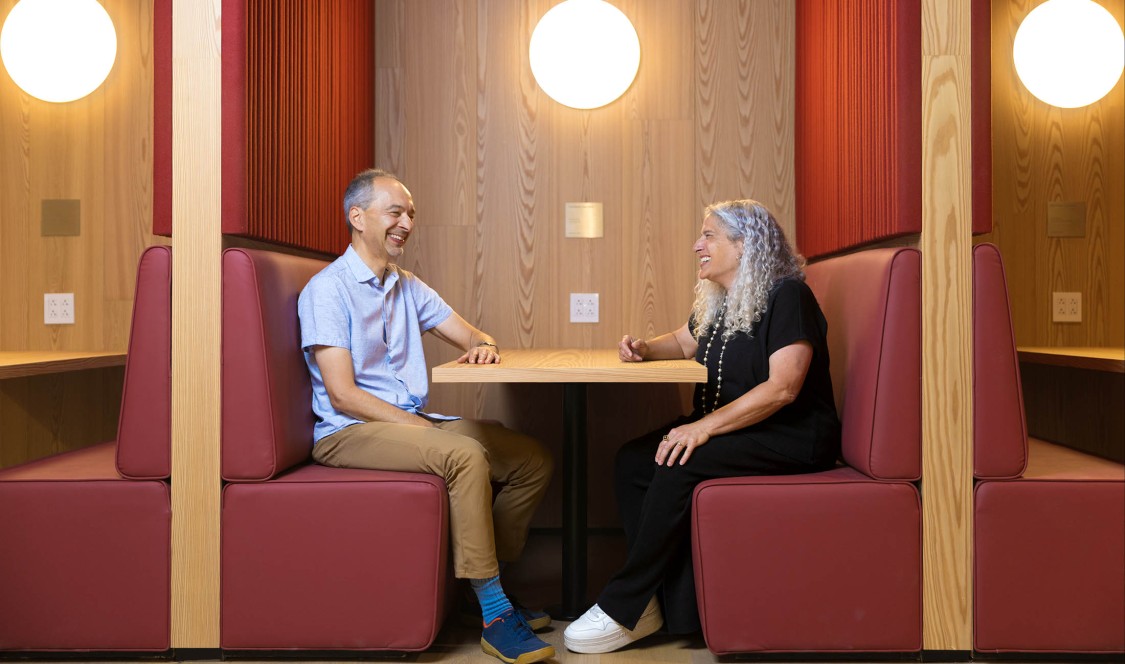The highly anticipated opening of CMC’s Robert Day Sciences Center (RDSC) for the 2025-26 academic year officially ushers in a new era of innovative science education on campus. Or as Heather Antecol, who has helped facilitate the College’s integrated sciences vision from day one, put it: “The RDSC is more than a building—it’s a launchpad for infinite possibility.”
“From the earliest sketches on paper with BIG–Bjarke Ingels Group to the vibrant, light-filled reality before us now, I’ve had the privilege of watching this vision grow from its infancy into a world-class center for integrated sciences,” said Antecol, Vice President for Academic Affairs and Dean of Faculty and James G. Boswell Professor of Economics.
“We’ve built groundbreaking curriculum from the ground up, recruited a founding chair and faculty united by a shared vision, and collaborated with experts from across the globe, including scientists, social scientists, humanists, medical professionals, and an extraordinary CMC team—with too many people to mention individually—all who poured their creativity and dedication into every detail.”
The rise of the building, and the Kravis Department of Integrated Sciences (KDIS) operating within, required unparalleled imagination and collaboration at every step of the developmental process. With the RDSC’s spacious and glass-rich architecture, much of the potential lies in the openness itself, which makes visible the interconnectedness so central to CMC’s bold vision.
“The transparency is essential, as it allows prospective students to see science being done by faculty and students. It allows a student taking our introductory Codes of Life course to see their dormmate across the way, doing her senior thesis project in a lab. It deliberately bridges teaching, learning, and research,” said Ran Libeskind-Hadas, KDIS Professor of Computational Biology and Founding Chair of the department.
Removing silos
The RDSC’s structure mirrors a core value of CMC’s integrated sciences curricula—the ability to move around in an expansive environment without, both literally and figuratively, hitting boundaries and barriers. No structural siloes; no thought siloes; no science siloes.
“It’s a place where computation, the sciences, humanities, and social sciences converge, preparing students to tackle complex, real-world challenges with insight and purpose,” emphasized Antecol. “Here, ideas cross boundaries as freely as the people who work here.”

The chance to approach science education in an entirely new way is what drew many KDIS teacher-scholars to the department, which is built around three grand challenges—brain, health, and our planet—and grounded in deep engagement with ethics, policy, and economics.
“The way that we're going to be able to teach will be transformational,” said Jason Keller, KDIS Professor of Ecology. Focusing on the nine state-of-the-art teaching labs, he is especially thrilled about the path-breaking possibilities ahead.
“This is the first time, as a department, we’ve had our own teaching laboratories,” Keller celebrated. “We can now roll out innovative, integrative courses where chemistry and physics are not separate, where chemistry and biology are not separate. And best of all, students get hands-on experience within that integration.”
Seamless transitions between disciplines are facilitated by the proximity of all KDIS faculty—18 now with plans to hire 7 more—on floors two and three of the cantilevered building.
Shibu Yooseph, KDIS Professor of Computational Biology and Bioinformatics, emphasized the potency of this arrangement, unique among collegiate science programs.
“It’s different from a traditional department building—we’re all here. From a collaboration perspective, this co-location is huge. Very few places have this level of interdisciplinarity housed in one building,” he said, adding that this helps students learn to connect the dots between fields now, instead of later or not at all.
“For students to understand these connections from the start, that’s going to be a big win for everyone.”

Discoveries on display
This interweaving of disciplines can be seen first-hand in the three “bench” labs for research, each with five benches intended for five faculty with complementary backgrounds. There’s no such thing as a “chem lab,” or a “bio lab”—they are “all-purpose.” Imitating the spaciousness and visibility of the building, a wide range of disciplines and approaches—and breakthroughs—are on display to the benefit of all.
“The fun part will be seeing students making discoveries with faculty and better understanding what everyone is doing,” said Keller. “Right there, a colleague is doing something very small with pipettors; across the bench, a colleague is 3D printing dinosaur skulls. The scope and scale of what it can mean to do scholarship is literally right across from them.”
Though the RDSC also houses two computational research labs, like every other intention and framework within the building, there’s no containment within the four walls or to one course of study. Training students in computational literacy—in areas such as AI, machine learning, and modeling—is also deeply integrated into multi-disciplinary, problem-based learning in the exciting new facility.
“In our lab courses, we will not need to make any distinctions between ‘this is a computing lab’ and ‘this is a bench lab,’” said Libeskind-Hadas. “We can, in the same laboratory session, do some bench lab work and then go straight to a comfortable seating area and say, ‘Now open up your computers and let’s start working on our code.’”
Libeskind-Hadas shared an example of how this relationship between methodologies can move science—and CMC students—toward a unified fluency that will uncover innovative solutions to complex problems.
“When one is designing a new model for a drug, rather than trying 100,000 options, you can do computational modeling that will help predict which candidates are the most promising, and that guides the bench lab work,” he explained. “The bench lab scientist is still doing critical experimental work, but rather than searching for needles in a haystack, they’re using computational methods to help identify potential real gems.
“Very few undergraduate science programs require that every undergraduate student gets this kind of computational sophistication. For us, it’s baked right into the cake from day one.”
Value of integration
CMC students will also benefit from a professionally managed vivarium, which will house small animals such as rodents, frogs, and birds on the ground floor. Diana Williams, KDIS Professor of Neuroscience, noted that lab animals provide unique opportunities to examine the central nervous system (brain and spinal cord), which, she explained, is the seat of all human experience—all perceptions of the outside world, all thoughts, feelings, and behavior, plus coordination of physiological functions. Engaging in such research—like manipulating the activity of individual neurons to observe the effect on an animal’s behavior—has implications for the science and non-science students alike.

“In a very real way, having some understanding of the fundamentals of neuroscience is critical to understanding ourselves, and this applies to everyone regardless of their academic or career directions,” Williams said.
“Students pursuing a career in biomedical science or medicine will benefit from participating in this kind of work,” she added, “but even for students who are more interested in the business or regulatory side of biotech or pharma industries, or public health and health policy, getting hands-on experience in how we do this kind of research will be so valuable.”
Libeskind-Hadas also noted that medical schools, including Harvard Medical School, are increasingly calling out the value of integrated approaches in undergraduate science preparation.
“And that’s us,” he said.
Now that the moment has finally arrived to welcome CMC’s emerging leaders to the new RDSC, faculty, staff, and College leaders are enthusiastic about the building’s every detail—right down to the acres of whiteboards that span entire walls and even the surfaces of some tables—facilitating interactions everywhere.
“A cherished, singular moment,” said President Hiram Chodosh, “when world-bending architecture and revolutionary pedagogy meet and amplify one another—all in service of higher learning for the grand challenges of our time. This is the culmination of the Claremont McKenna community’s path- and back-breaking commitment.”
“The possibilities truly feel limitless,” Keller added. “It is such a cool moment to be a scientist on this campus.”
Join us for the official opening and dedication of the Robert Day Sciences Center on September 26! Open to the public, festivities begin at 1 p.m. with a community opening and art dedication.

